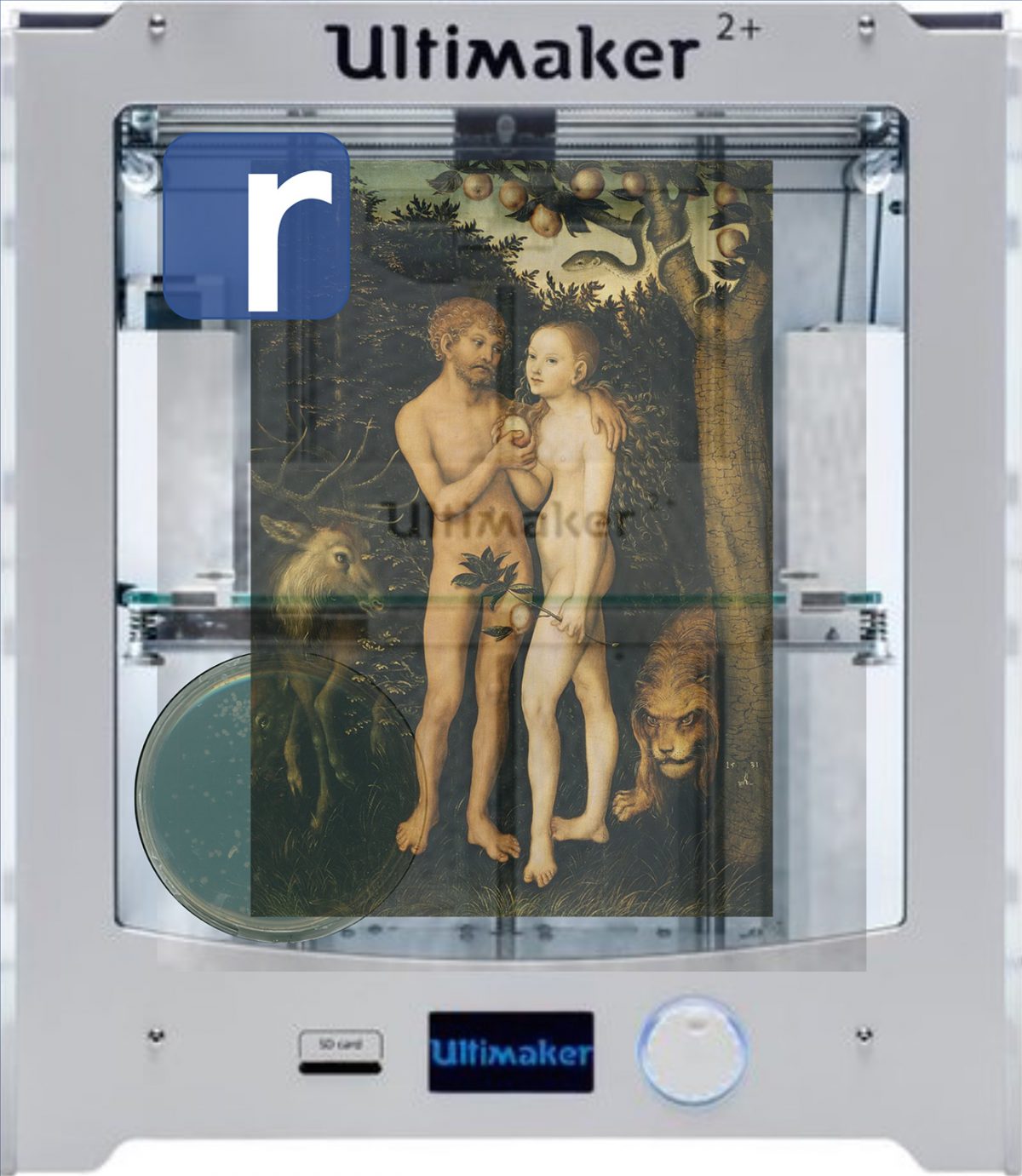17 05 17 — 19:23

an epidemiology.
The contribution in the 12th glass body deals with the process of reformation along two parallel lines: as a biological and thus autonomous process on the one hand and as an artificial form on the other. The ‘epidemic’ ironies the sensationalist drama in the mythization of the reformist hero Martin Luther and tries to draw the visitors into a deeper engagement with the development process of the Reformation into an epidemiology.
The work of art is set up as an open experiment. Its materials will be digital images on the one hand and bacteria on the other, naturally occurring, as they do, quite individually on our skin as part of our microbes. Remote from biologistic ideologies, scare stories, and the usual bioethics discussions, this experiment is intended to address the initial hypotheses and questions described below. In doing so, this research approach is not only bio-artistic, but also theological, attempting to lead religiously motivated visitors, visitors interested in history, and passers-by from a predominantly secular environment out of their comfort zones.
Starting points:
- In the legendary posting of the 95 theses, and in the provocative burning of the papal bull, as well as in the musealisation of an epochal event lies an artistic staging, which is continued today with contemporary artistic methods. With these techniques, permanence (in the virtual world) and transient dynamics (in bacterial culture) differentiate their characteristics.
- Media and technology, however, are only some of the prerequisites for cultural evolution. Decisive factors for their development are the content, the messages and the needs. They then search for the content carrier available at the time, for their development. It was not Gutenberg’s new printing technology that allowed the Reformation to take place, but the existence of something that deeply moved people, which needed to be printed. Needs are spread in new global social media, where the technical networks are primarily responses rather than determining structures.
- The Reformation captures people by redefining the view of man, of each individual of himself or herself. Obviously, it fulfilled a deep aspiration. In direct contact, or in the engagement with God, in the direct reflection of the likeness, each individual person is liberated from their own, (with the self-conscious as benchmark of themselves) justified, being-as-they-are. He is worth himself and develops in himself a sensual and emancipating embodiment and redefinition. All this is nothing but art.
- The decisive impact of Luther‘s theology lies in laying bare this old theological conception of man through the elimination of the authority of the church, regarded as no longer necessary as a medium for this process. Here the margins for the question of who I am are re-drawn, and my autonomy in the question of who I should be is expanded.
- This gain in autonomy, however, puts man into the probing uncertainty that accompanies the highest authority (God/myself); all alone, and only with what I am, and no matter what I do, whether mercifully or mercilessly exposed. The new autonomy demands that people re-orientate themselves and verify this categorization. This categorization is exacerbated by the perspective of a decision about who can survive in the long run: through faith (Luther), analogous action (the sale of indulgences), or the number of followers as a measure. This exposure is only tolerable to us in the consciously produced visibility before God or before the people, who should ensure that of us, if not for eternity, at least ‘something remains’ in the now, and if there is a letter, it’s a piece of paper. In an evolutionary process, forms of permanence or reproduction are selected. This assurance has its price: a monetary one for the real cost that we engage in for our design and presentation. Or we pay by disclosing ourselves: to what extent we allow ourselves and our data to be used. By surrendering once again, more or less naked, to an authority which decides whether we belong or not; with just as unknown an outcome as with a fee-based guarantee for a paradise in your hand.
